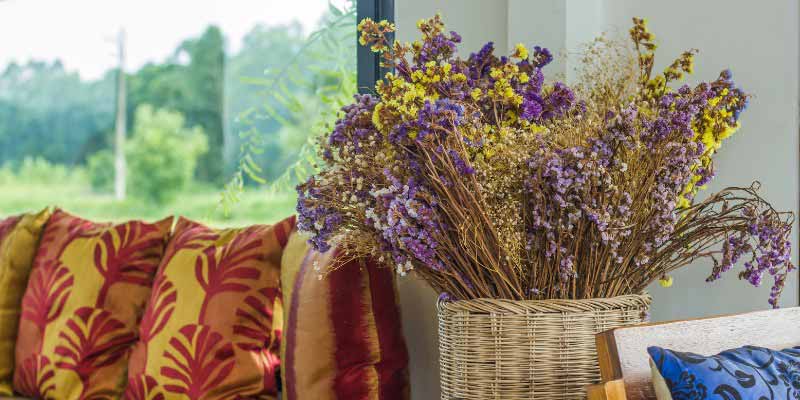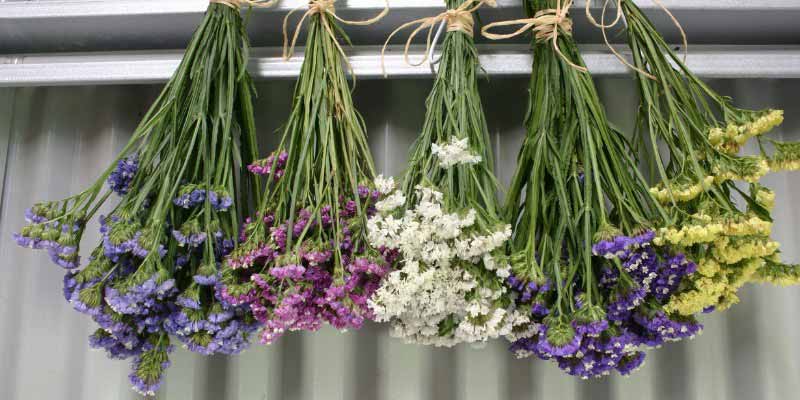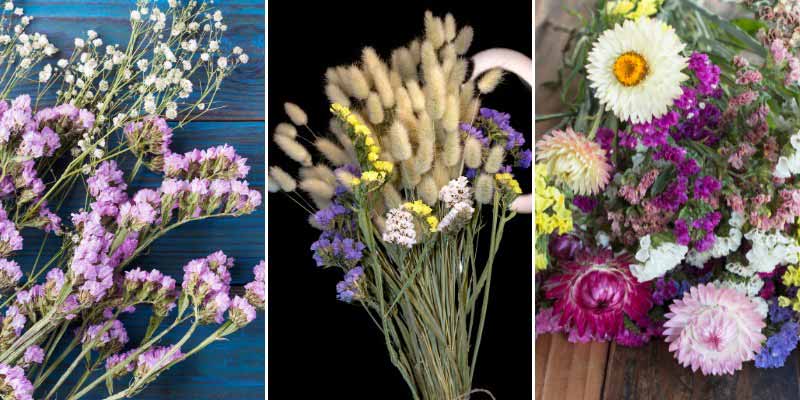Limonium or statice is a light, airy perennial plant that offers long-lasting, colourful flowering in garden as well as in fresh or dried bouquets. Very floriferous, yet airy, in garden it lightens borders and rockeries, forming from summer to autumn a cloud of small lavender, white, pink, yellow or purple flowers. Statice is notable for its tall, ramified flower stalks, decorated with small, papery-textured flowers that retain colour for a long time, even once dried. A staple of dried bouquets, statice is probably one of easiest flowers to dry! So why not grow it in garden and dry it yourself? In this tutorial, we will guide you through harvest and drying of statice so you can fully enjoy its decorative qualities indoors.
When to cut Limonium for drying?
Best time to harvest Limonium is when flowers are fully open, but before they begin to fade. From June to October, tall, highly ramified flower stalks emerge from foliage. Harvest therefore takes place in midsummer, when plant is in full flowering. As a bonus, harvesting encourages rebloom, statice flowering being able to extend over five months.

How to harvest statice?
Use clean, sharp garden scissors or pruning shears to cut stems at base, preferably early morning after dew has evaporated to avoid excess moisture that could affect drying. Keep full length of stems to ensure good support once dried. Remove damaged stems or partly faded flowers, as these could affect quality of bouquet.
How to dry Limonium?
To prolong statice beauty, simply dry its brightly coloured, papery inflorescences. They will take on slightly more pastel shades over time.
Air-drying
- Remove lower leaves to prevent rot during drying.
- Tie stems into small bunches of 5 to 10 stems using raffia or string, taking care not to tie too tightly so as not to damage them.
- Hang bunches head down in a dry, well-ventilated place, away from direct sunlight, such as an attic, garage or cupboard.
- Make sure bunches do not touch so air can circulate and mould is avoided.
- Leave stems to dry for about 2 to 3 weeks, depending on ambient humidity.
- Check flowers regularly. They are ready when stems are stiff and flowers are crisp.
- Once drying is complete, store flowers in a dry place away from direct light to preserve colour.
- You can also simply dry them in a vase with 2 cm of water until it has completely evaporated. Leave statice in a dark, dry, well-ventilated room so they dry naturally.

How to store dried statice?
Store dried statice away from direct sunlight, as light can fade colours over time. You can spray a light dried-flower fixative or hairspray to help flowers hold their shape and prevent rapid deterioration. Also place bouquet in a dry spot, as humidity can make stems fragile and encourage mould. Avoid humid rooms such as bathrooms or kitchens.
How to compose a dried bouquet with Limonium?
With their vivid or soft colours, statice can form the base of many bouquets, bringing a touch of elegance and lightness thanks to their airy inflorescences. Here are some ideas to showcase your floral arrangements:
- Country-style bouquet: Pair statice with dried lavender spikes, dried hydrangea heads and grasses such as Pennisetum or Lagurus ovatus 'Bunny Tails. This combination creates a bouquet in soft tones, perfect for a natural, bucolic effect.
- Romantic bouquet: Combine statice with pale roses, opium poppy seedheads (Papaver somniferum) and gypsophila flowers for a delicate, tender arrangement.
- Bohemian bouquet: Mix statice with blue thistles (for example Echinops ritro or "globe thistle") for a prickly, free-spirited natural bouquet.
- Autumn dried bouquet: Pair dried statice with bract-bearing strawflowers. This bouquet plays on shapes and textures for a striking, contemporary effect.

































Comments